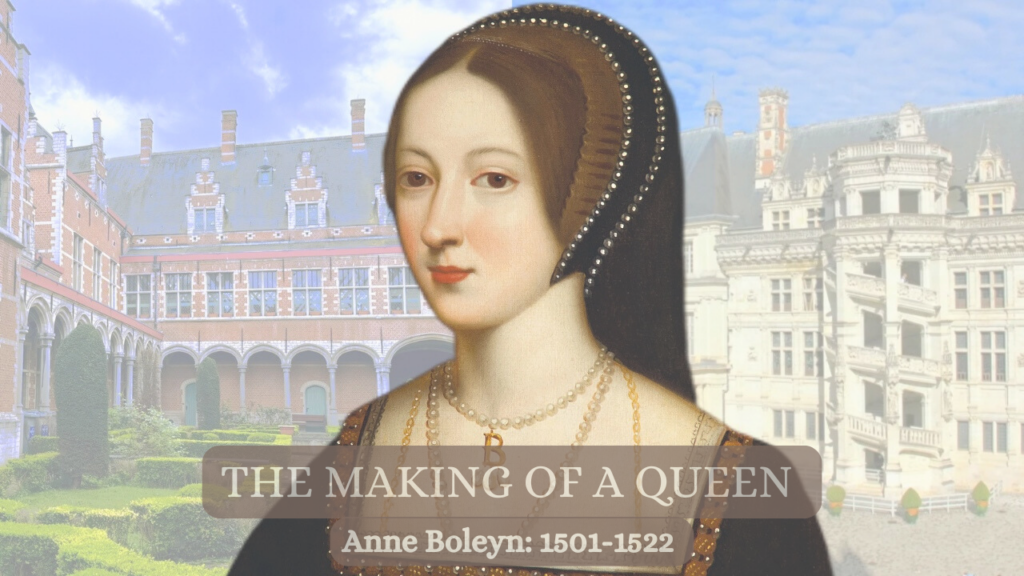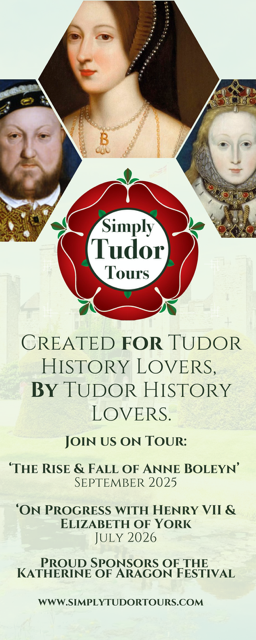In early April 1502, fifteen-year-old Arthur Tudor, heir to the still shaky Tudor throne, lay dying in his chambers at Ludlow Castle in Shropshire.
The wind howled and the rain beat down heavily against the ancient fortress’s grey walls, while its residents sought refuge in the Norman chapel of St Mary Magdalene, and prayed for a miracle.
There was, though, no amount of praying or ministrations that could save the prince from what one Tudor herald described as ‘the most pitiful disease and sickness.’ And so, tragically, on Saturday, 2 April 1502, just five months after his marriage to Katherine of Aragon, Arthur Tudor died.
Messengers were immediately sent to London but the 160-mile journey meant that they did not arrive at Greenwich Palace until late on the Monday. It was then left to the King’s confessor to break the terrible news to Henry VII early the next morning, who in turn shared the heavy tidings with his wife, Elizabeth of York.
Shortly thereafter, preparations began for Arthur’s funeral but as this took time to organise, the royal corpse would, as usual, need embalming.
Body preservation and embalming techniques appear to have been practised in various locations across Europe from as early as the late Middle Ages, and influenced by techniques employed in Asia and Africa since the time of the ancient Egyptians. Largely developed for royalty, nobles and Catholic dignitaries, funeral embalming—usually performed by physicians, surgeons and barber-surgeons—delayed the process of decay during the period between death and burial and enabled mortal remains to be transported across long distances. In the case of royalty, it also meant that the monarch’s body could be exhibited to their subjects before burial.
The process in the sixteenth century involved washing and eviscerating the body, sluicing out the inner cavities with various disinfectant fluids and then stuffing and covering the body with aromatic herbs and spices, which might include thyme, rosemary or lavender. The body was then wrapped in layers of cerecloth (waxed cloth) with the seams sealed with beeswax, sheathed in lead and encased in a wooden coffin with dry sweet herbs. From the sixteenth century onwards, we also see the introduction of balms, ointments and powders capable of dehydrating and drying out the corpse.
In The Receyt of the Ladie Kateryne we’re told that Arthur’s corpse was disemboweled and ‘well embalmed’ before being ‘dressed with spices and other sweet stuff such as those as bare the charge thereof could provide’. So well embalmed in fact, that there was no need for the usual lead coffin, instead his body was placed in a wooden chest where it lay in state for almost three weeks. Another young Tudor royal, who died at the same age as Arthur Tudor, was Henry VIII’s son, Edward VI. He succumbed to illness on 6 July 1553 but was not buried until 8 August. This extended delay in the warm weather must have posed a challenge for all those within close proximity of the young king’s body.
In 1503, Elizabeth of York’s corpse was washed with wine and rosewater before being embalmed and ‘enclosed in lead’ by the King’s plumber, ‘with an epitaph in lead’, and then encased in a wooden coffin covered with black velvet.
When her son, Henry VIII, died in 1547, the surgeons and apothecaries prepared his body by ‘spurging, cleansing, bowelling, searing, embalming, furnishing and dressing with spices.’ In The Last Days of Henry VIII, Robert Hutchinson describes how William Paulet, Lord Steward of the Household, ‘ordered the royal household’s gentleman apothecary, Thomas Alsop, to supply unguents – including cloves, oil of balm, tow, myrrh and sweet-smelling nigella and musk – either powdered and divided into seven lots for the surgeons to use in embalming, or contained in ten bags to put into the coffin…’ Interestingly, he goes on to state that this would have cost the exchequer £26 12s 2d, equivalent to more than £6,600 today!
Apart from embalming, the practice of burying the heart and viscera separate to the body was also not uncommon. It’s believed that Arthur’s heart was buried in St Lawrence’s Church in Ludlow (a plaque marks the spot today), while his body was interred in Worcester Cathedral. Henry VIII’s entrails and bowels were buried in a lead box in the chapel of the Palace of Westminster and his body in St George’s Chapel, Windsor Castle. After the death of Mary I, she ‘was opened by her Physicians and Surgeons, who took out her bowels, which were encoffin’d and buried solemnly in the Chappel, the heart being separately enclosed in a coffer with velvet, bound in silver’.
According to Jennifer Woodward, author of The Theatre of Death, Elizabeth I ‘had felt a horror of embalming’, so much so that she specifically requested that her body not be opened after death. While it doesn’t appear that it was possible to avoid embalming Elizabeth’s corpse, there appears no mention of a separate burial of the viscera.
For those of you wanting to learn more about the medicinal and household uses of herbs and plant matter in medieval and Tudor England, I recommend visiting Medicine Lore, a very informative website, and click here to read more about Death in Tudor England.
References/Sources Hutchinson, R., The Last Days of Henry VIII, Great Britain: Weidenfeld & Nicolson 2005. Kipling, G., ed., The Receyt of the Ladie Kateryne, Oxford: Oxford University Press, 1990. Starkey, D., Six Wives: The Queens of Henry VIII, New York: Harper Collins Publisher 2003. Weir, A., Elizabeth of York: The First Tudor Queen, London: Jonathan Cape 2013. Woodward, J., The Theatre of Death: The Ritual Management of Royal Funerals in Renaissance England, 1570-1625, Woodbridge, Suffolk: Boydell Press, 1997. Funeral Embalming: the transformation of a medical innovation. A Survey of the Cities of London and Westminster, borough of Southwark and parts adjacent.

























Oooohhh! MY! How will the dead be recaptured by the souls/spirits of the royalties when the end of the world commenced??? Poppy cock on that, they wanted to be viewed by their people to be remembered for the power and display of name TUDOR. If Elizabeth Tudor had only known that her body would be placed under another royal body/coffin to be lost for a time, she might have never left the earth. Ha, Ha, Ha! Of course I don’t believe this weird and frightfully scary view, but this article was excellent. How did the world ever get into the worship of kings and their queens (of course the other royals included) but because of gratification and need to continue the push for a wealthy class of thinkers and actors. Without the death of embalming the royals would the world have less to guess and gossip about these individuals.
The Pope’s bodies displayed at the Vatican, should frighten anyone with looking on these vestments and disgusting bodies of the powerful.
If Elizabeth the First lived with fear conscious or unconscious of the possibilities of being executed, poisoned or destroyed like her Mother, no wonder she died sitting up dreading the moment coming… The dread of death, punishment always her moniker from three to her death for acts done to her coming of age as a princess to queen and that set of acts she hated most, royals executed for fear of Catholic takeover of the queen’s realm. Does the body at the moment of death show horror? Does embalming give the mortician a role in the theater of death? I saw my sweet grandfather before he died in the throes of cancer, when he died in his hospital bed and the embalmed body at the wake. I will never forget the smell of death and seeing him in a suit he wore to church. ATK
Interesting article…thank you!
If you ever get the chance visit Westminster abbey it is held together by dead bodies all famous, some royal some not, squeezed into the tiniest of spaces as it is quite a small church, much smaller than it looks on TV but so interesting